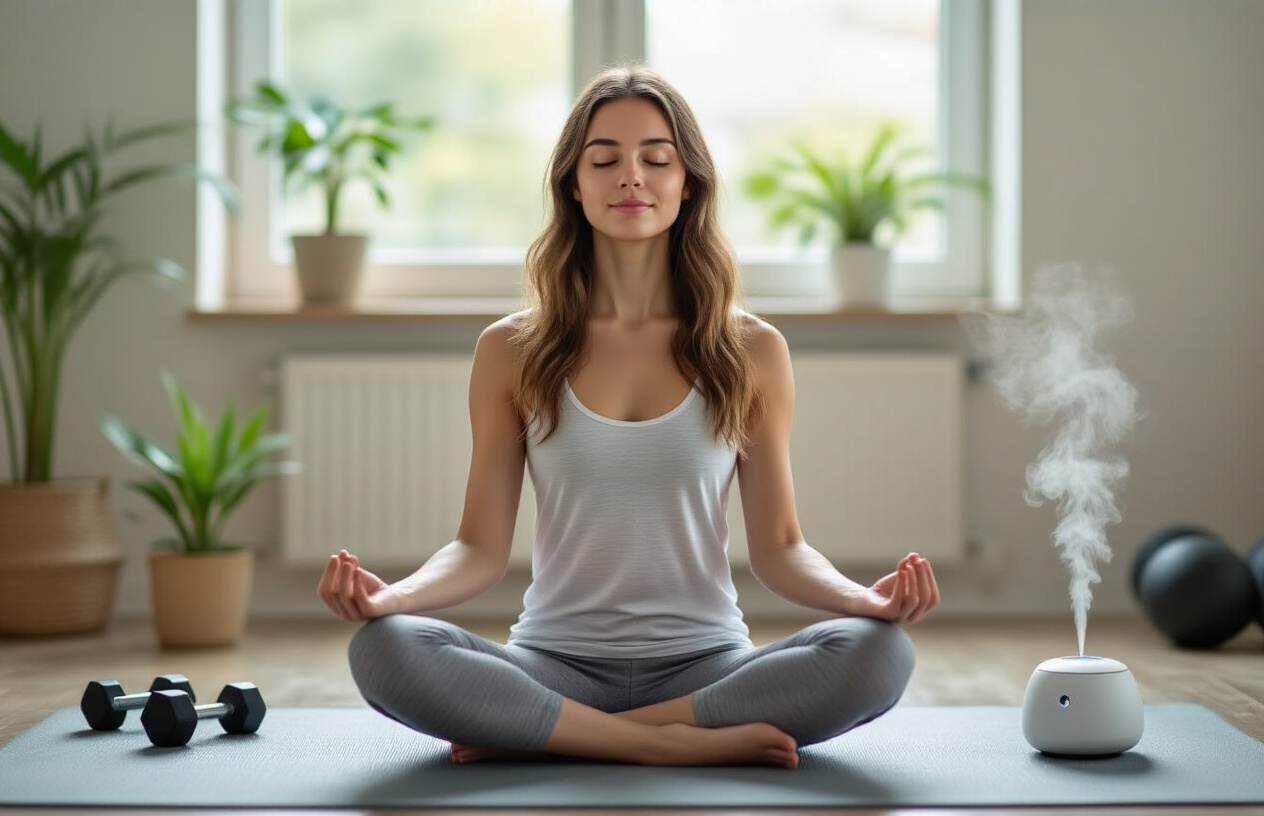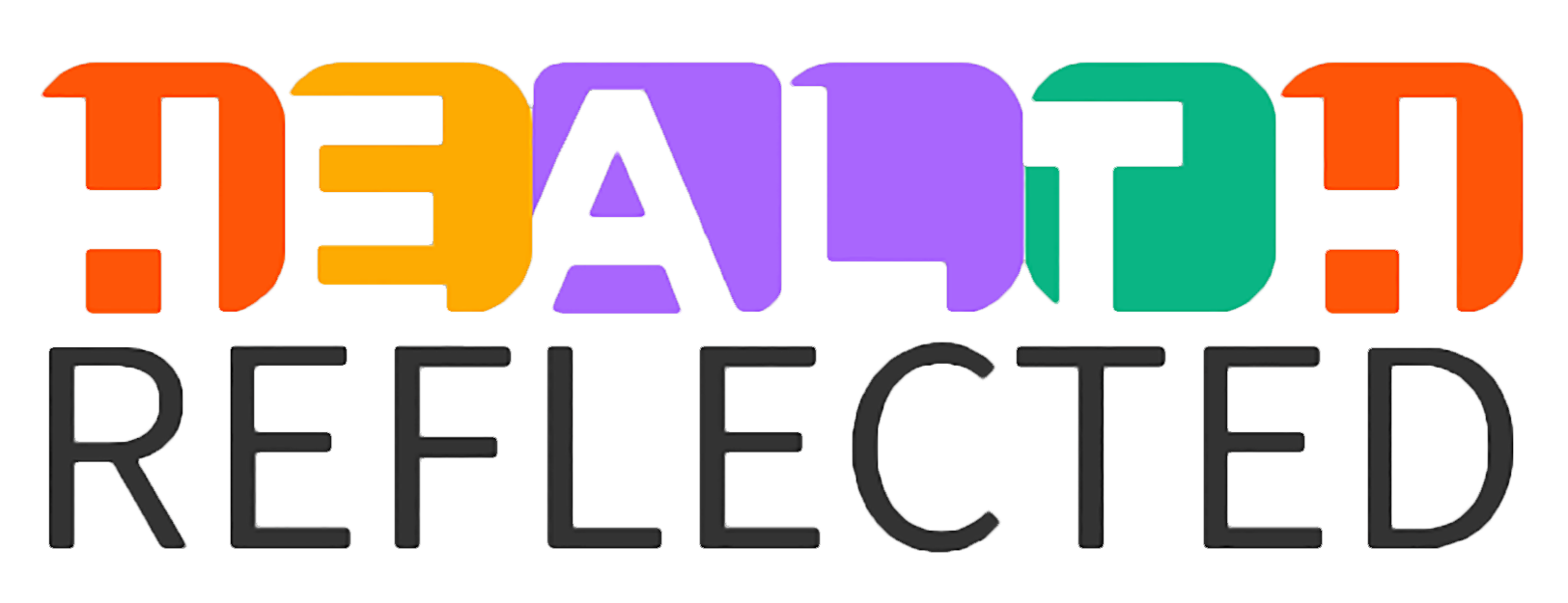Balanced Fitness & Wellness Routine becomes essential when you're juggling work deadlines, family responsibilities, and social commitments—and finding time for health feels almost impossible. You're not alone; millions of busy professionals struggle to maintain a routine that actually lasts.
This guide is designed for working individuals, parents, students, and anyone aiming to prioritize their well-being without sacrificing their career or personal life. The good news? You don't need long gym sessions or complicated meal plans to build sustainable wellness habits.
Here, you’ll learn how to create time-efficient workouts that fit your packed schedule, simple ways to integrate movement into your workday, sustainable nutrition strategies that work even during desk lunches, and the powerful impact of recovery and sleep optimization—often the missing pieces in achieving true wellness.
Assess Your Current Lifestyle and Fitness Goals

Identify time blocks in your daily schedule
Building a balanced fitness routine for busy people starts with mapping out your current schedule like a detective investigating a case. Take one week and track every hour - from when you wake up to when your head hits the pillow. Most people discover hidden pockets of time they never realized existed.
Look for natural transition periods: the 20 minutes between meetings, your lunch break, early mornings before the household wakes up, or evening wind-down time. Even commute time can become movement opportunities if you walk, bike, or get off public transport a stop early.
Create a simple time audit using these categories:
- Fixed commitments (work, family obligations, appointments)
- Flexible activities (social media, TV, errands)
- Transit time (commuting, driving kids around)
- Personal care (meals, hygiene, sleep prep)
The goal isn't finding massive chunks of time - it's identifying realistic windows where movement and wellness activities can fit naturally into your existing rhythm.
Define realistic health and fitness objectives
Your fitness goals need to match your lifestyle reality, not some idealized version of yourself. Fitness routine busy schedule success comes from setting objectives that excite you without overwhelming your already packed days.
Start with outcome-based goals rather than process-based ones. Instead of "work out 5 times per week," try "have energy to play with my kids after work" or "feel confident in my clothes." These connect to your deeper motivations and make the effort feel worthwhile.
Consider the SMART framework adapted for busy lives:
| Goal Type | Busy Person Example | Why It Works |
|---|---|---|
| Specific | "15-minute morning strength routine" | Clear, no guesswork |
| Measurable | "Walk 7,000 steps daily" | Trackable progress |
| Achievable | "2 home workouts per week" | Fits real schedule |
| Relevant | "Reduce back pain from desk work" | Addresses actual problem |
| Time-bound | "Build habit over 6 weeks" | Manageable timeframe |
Prioritize 2-3 main objectives rather than trying to overhaul everything simultaneously. Your brain and schedule can only handle so much change at once.
Evaluate your current physical activity levels
A Balanced Fitness & Wellness Routine begins with honest self-assessment, helping you understand your true starting point so you don’t underestimate your abilities or push yourself into burnout. Working professionals must evaluate both structured exercise and incidental daily movement to build a routine that truly supports their lifestyle.
Track your baseline for one week without changing any habits:
-
Structured activity: Planned workouts, sports, fitness classes
-
Daily movement: Walking between meetings, taking stairs, household chores
-
Sedentary time: Hours spent sitting at a desk, in the car, or on the couch
-
Energy levels: Times of peak and low energy throughout the day
Use your phone’s built-in step counter or a simple fitness app to gather objective data. Many people discover they’re either more active than they assumed—or moving far less than what feels healthy.
Pay close attention to how your body responds to different activities. Maybe dancing excites you more than traditional cardio, or perhaps morning movement boosts your day while evening workouts disrupt your sleep. These insights become essential building blocks for crafting a Balanced Fitness & Wellness Routine that fits your preferences and supports long-term consistency.
Recognize personal barriers and constraints
Every person faces unique obstacles that can derail even the best intentions. Busy lifestyle fitness tips work best when they acknowledge and plan around your specific challenges rather than pretending they don't exist.
Common barriers include:
Time constraints: Unpredictable work schedules, family responsibilities, long commutes
Physical limitations: Past injuries, chronic conditions, current fitness level
Environmental factors: Limited space at home, no gym access, weather dependencies
Mental barriers: Perfectionist thinking, past negative experiences, motivation fluctuations
Social challenges: Unsupported family members, social obligations that conflict with health goals
Write down your top 3-5 barriers and brainstorm specific solutions for each. If unpredictable work hours are your biggest challenge, focus on flexible home workouts rather than rigid gym schedules. If motivation is the issue, consider accountability partners or habit stacking (linking new habits to existing ones).
Remember that barriers aren't excuses - they're design constraints that make your fitness routine more creative and personalized. The most successful time-efficient workouts come from working with your limitations rather than against them.
Design Time-Efficient Workout Strategies

Master 15-20 minute high-intensity interval training
High-intensity interval training (HIIT) becomes your secret weapon when time is tight. These quick workout strategies pack maximum punch into minimal time, making them perfect for your busy lifestyle fitness routine.
A basic HIIT structure follows a simple pattern: 30 seconds of intense work followed by 15-30 seconds of rest, repeated for 15-20 rounds. You can apply this to any exercise - burpees, mountain climbers, jump squats, or even running in place.
Start with bodyweight basics like alternating between jumping jacks and rest periods. Once comfortable, create circuits combining 4-5 exercises: burpees, squat jumps, push-ups, high knees, and plank jacks. Perform each for 45 seconds with 15 seconds transition time.
The beauty of HIIT lies in its afterburn effect - your body continues burning calories hours after finishing. Research shows 15-20 minutes of HIIT can burn as many calories as 45 minutes of steady cardio, making it ideal for time-efficient workouts.
Incorporate bodyweight exercises for anywhere workouts
Bodyweight exercises eliminate excuses by requiring zero equipment. Whether you're in a hotel room, office, or living room, these movements adapt to any space.
Essential bodyweight exercises include:
- Push-ups (modify on knees if needed)
- Squats (air squats or jump squats)
- Lunges (forward, reverse, or lateral)
- Planks (standard, side, or dynamic)
- Glute bridges
- Pike push-ups for shoulders
Create quick 10-15 minute routines by selecting 3-4 exercises and performing them in circuits. Try 10 push-ups, 15 squats, 20-second plank, and 10 lunges per leg. Repeat 3-4 times with minimal rest between exercises.
Use compound movements for maximum muscle engagement
Compound movements work multiple muscle groups simultaneously, delivering maximum results in minimum time. These exercises form the backbone of any balanced fitness routine for busy people.
Key compound exercises include:
| Exercise | Primary Muscles | Secondary Muscles |
|---|---|---|
| Squats | Quadriceps, glutes | Core, calves |
| Deadlifts | Hamstrings, glutes | Back, core, traps |
| Push-ups | Chest, triceps | Shoulders, core |
| Pull-ups | Back, biceps | Core, forearms |
| Burpees | Full body | Cardiovascular system |
Focus on 2-3 compound movements per session rather than isolating individual muscles. A simple routine might combine squats, push-ups, and planks - hitting your entire body in under 20 minutes.
Schedule micro-workouts throughout your day
Micro-workouts break exercise into bite-sized chunks scattered throughout your day. Instead of finding 45 minutes, you find three 10-15 minute windows.
Try this daily breakdown:
- Morning: 5 minutes of stretching and bodyweight squats
- Lunch break: 10-minute walk or stair climbing
- Afternoon: 5 minutes of desk exercises (calf raises, seated leg extensions)
- Evening: 10 minutes of core work and stretching
Even 2-minute movement breaks every hour make a difference. Do wall push-ups during conference calls, calf raises while waiting for coffee, or take stairs instead of elevators. These small actions accumulate into significant health benefits while fitting seamlessly into your busy schedule.
Micro-workouts also boost energy and productivity throughout your day, making them perfect for working professionals who need sustainable fitness strategies that don't disrupt their workflow.
Integrate Movement into Your Daily Routine

Transform Commute Time into Active Travel
Your daily commute presents one of the best opportunities for daily movement integration without adding extra time to your schedule. Walking or biking to work, even partially, can dramatically boost your fitness levels while reducing transportation costs and environmental impact.
If your workplace is within 3-5 miles, consider cycling as your primary commute method. A 20-minute bike ride burns approximately 200-300 calories and provides excellent cardiovascular exercise. For longer distances, try parking 10-15 minutes away from your destination or getting off public transport one stop earlier to incorporate walking.
Public transportation users can maximize movement by standing instead of sitting, taking stairs instead of escalators, and doing calf raises or subtle stretches while waiting for trains or buses. These small actions accumulate significant health benefits over time.
Replace Sedentary Meetings with Walking Discussions
Walking meetings revolutionize traditional conference room discussions while boosting creativity and energy levels. Research shows that walking increases creative thinking by up to 60%, making it perfect for brainstorming sessions and one-on-one discussions.
Start with shorter meetings (15-30 minutes) and gradually extend duration as you become comfortable. Choose safe, quiet routes with minimal distractions - office hallways, nearby parks, or designated walking paths work well.
Ideal walking meeting scenarios:
- Performance reviews and feedback sessions
- Project planning discussions
- Team bonding conversations
- Phone calls with remote colleagues
- Brainstorming creative solutions
Bring a small notepad for jotting down important points, or use voice recording apps on your phone. Walking meetings work best for discussions rather than presentations requiring visual aids or detailed note-taking.
Use Household Chores as Strength Training Opportunities
Transform mundane household tasks into effective time-efficient workouts by adding intentional movements and resistance. This approach eliminates the excuse of having no time for exercise while maintaining your living space.
Kitchen workout opportunities:
- Do calf raises while washing dishes or cooking
- Perform wall push-ups against the counter during meal prep
- Add squats while waiting for water to boil or food to cook
- Use filled water jugs or heavy cans as weights for arm exercises
Cleaning-based exercises:
- Turn vacuuming into lunges by stepping forward with each push
- Incorporate squats between furniture while dusting
- Use scrubbing motions as arm strengthening exercises
- Carry laundry baskets using proper lifting form for core engagement
Yard work fitness integration:
- Rake leaves using alternating arm movements for core rotation
- Garden using deep squats instead of kneeling
- Shovel snow with proper form for full-body strengthening
- Mow the lawn in varying patterns to engage different muscle groups
The key lies in being intentional about your movements and maintaining proper form. These activities can burn 150-400 calories per hour while accomplishing necessary tasks, making them perfect for busy people seeking balanced fitness routine for busy people solutions.
Create a Sustainable Nutrition Plan for Busy Schedules

Master meal prep techniques for the week ahead
Successful meal prep doesn't mean spending entire Sundays in the kitchen. Start with batch-cooking versatile proteins like grilled chicken, baked salmon, or roasted tofu that work across multiple meals.
Cook a large pot of quinoa or brown rice that becomes your base for different bowls throughout the week. Wash and chop vegetables right after grocery shopping, storing them in clear containers where you'll actually see them.
The secret lies in preparing components rather than complete meals. Roast a sheet pan of mixed vegetables, hard-boil a dozen eggs, and prepare mason jar salads that stay fresh for days. Invest in quality glass containers with tight-fitting lids – they keep food fresher longer and make reheating easier.
Create themed prep sessions: "Protein Sunday" for cooking all your main proteins, "Veggie Tuesday" for washing and chopping produce, and "Snack Saturday" for portioning nuts, fruits, and homemade energy balls. This approach prevents meal prep from becoming overwhelming while ensuring you always have healthy options ready.
Build a repertoire of 10-minute healthy meals
Quick meals don't have to sacrifice nutrition. Master these foundation formulas: protein + vegetables + healthy fat + whole grain. A scrambled egg with spinach, avocado, and whole grain toast hits all marks in under 10 minutes. Greek yogurt topped with berries, nuts, and a drizzle of honey provides complete nutrition for breakfast or snacks.
Sheet pan meals become your best friend for sustainable nutrition busy lifestyle goals. Toss pre-cut vegetables with canned beans, olive oil, and spices, then roast for 8 minutes while you prepare a quick side salad. Canned salmon mixed with avocado, cucumber, and crackers delivers omega-3s and protein instantly.
Keep frozen vegetables on hand – they're often more nutritious than fresh produce that's been sitting around, and they cook in minutes. Stir-fries using frozen vegetable blends, pre-cooked protein, and a splash of teriyaki or peanut sauce create satisfying meals faster than takeout delivery.
Stock your pantry with versatile staples: canned beans, whole grain wraps, nut butters, and pre-cooked grains. These ingredients form the backbone of countless quick combinations that fuel your body properly without requiring extensive cooking skills.
Stock portable snacks that fuel your body
Smart snacking prevents energy crashes and poor food choices later. Create portable snack combinations that include protein, fiber, and healthy fats to maintain steady blood sugar levels. Apple slices with almond butter, Greek yogurt with berries, or hummus with vegetable sticks provide sustained energy without the crash.
Prepare weekly snack portions in small containers or bags. Trail mix combining nuts, seeds, and dried fruit (without added sugar) travels well and provides quick energy. Hard-boiled eggs paired with cherry tomatoes offer protein and vegetables in a portable package.
| High-Energy Portable Snacks | Prep Time | Shelf Life |
|---|---|---|
| Energy balls (dates, nuts, cocoa) | 15 minutes | 1 week |
| Homemade granola bars | 20 minutes | 2 weeks |
| Veggie and hummus cups | 5 minutes | 3 days |
| Greek yogurt parfaits | 10 minutes | 3 days |
Keep emergency snacks in your car, office desk, and gym bag. Individual nut butter packets, protein bars with minimal ingredients, and dried fruit provide backup options when you're caught without proper meals.
Develop strategies for healthy eating while traveling
Travel disrupts routines, but planning ahead maintains your nutrition goals. Pack non-perishable snacks like nuts, protein bars, and dried fruit for flights and long drives. Bring a refillable water bottle to stay hydrated without relying on expensive airport options.
Research restaurants and grocery stores near your destination before departure. Many hotel rooms include mini-fridges and microwaves, allowing you to store yogurt, fruit, and simple meal components. Even gas station convenience stores now carry options like hard-boiled eggs, nuts, and fresh fruit.
When flying, request special meals that often include more vegetables and lean proteins than standard airline food. Airport terminals increasingly offer healthier options – look for salad bars, sushi, or Mediterranean food rather than defaulting to fast food.
Create a travel eating strategy that's 80% planned, 20% flexible. Plan your main meals and snacks, but allow room for trying local specialties without derailing your overall nutrition goals.
Learn to make nutritious choices when dining out
Restaurant meals don't have to sabotage your wellness routine working professionals maintain. Start by reviewing menus online before arriving – this prevents impulsive ordering when hungry. Look for keywords like "grilled," "steamed," "roasted," or "broiled" rather than "fried," "crispy," or "creamy."
Ask for modifications confidently: dressing on the side, vegetables instead of fries, or grilled instead of fried protein. Most restaurants accommodate these requests gladly. Split entrees with dining companions or immediately box half your meal to control portions.
Choose restaurants with varied menus that include lighter options. Mediterranean, Vietnamese, and Japanese cuisines naturally offer many vegetable-heavy, lean protein dishes. Even at steakhouses, you'll find grilled fish and large salads.
Focus on the social aspect of dining out rather than making food the sole entertainment. When the experience centers on conversation and connection, making healthier choices becomes easier and more natural.
Prioritize Recovery and Sleep Optimization

Establish consistent sleep and wake times
Your body craves predictability, especially when life gets chaotic. Setting a consistent sleep schedule becomes your secret weapon for recovery and sleep optimization in a busy lifestyle. Your circadian rhythm thrives on routine, so aim to sleep and wake at the same times every day – yes, even on weekends.
Start by working backward from your ideal wake time. If you need to be up at 6 AM, count back 7-8 hours to find your target bedtime. This creates a non-negotiable window that protects your recovery time. When your sleep schedule becomes automatic, you'll notice improved energy levels and better workout performance throughout your balanced fitness routine for busy people.
Track your sleep patterns for one week to identify your natural preferences. Some people function better going to bed at 10 PM and waking at 6 AM, while others prefer 11 PM to 7 AM. Find what works for your lifestyle and stick to it religiously. Use your phone's built-in sleep tracking or a simple journal to monitor how different bedtimes affect your next-day performance.
Create a technology-free bedtime routine
Blue light from screens tricks your brain into thinking it's still daytime, sabotaging your body's natural wind-down process. Establishing a technology-free zone 60-90 minutes before bed transforms your sleep quality and supports your overall wellness routine working professionals need.
Replace scrolling with calming activities that signal bedtime to your nervous system. Try reading a physical book, gentle stretching, or meditation. Keep your phone in another room or use a traditional alarm clock to avoid the temptation of late-night checking.
Create a consistent pre-sleep ritual that your body recognizes as bedtime preparation:
- Dim the lights throughout your home
- Take a warm shower or bath
- Practice 5-10 minutes of deep breathing
- Write down tomorrow's priorities to clear mental clutter
- Listen to calming music or nature sounds
This routine becomes especially powerful when combined with your fitness routine busy schedule. The physical tiredness from exercise paired with a technology-free wind-down creates the perfect recipe for restorative sleep.
Use active recovery techniques during work breaks
Active recovery doesn't mean adding another workout to your packed schedule. Smart professionals use brief movement breaks to enhance recovery while staying productive. These micro-recovery sessions reduce muscle tension, improve circulation, and reset your mental state without requiring gym time.
Every 90 minutes, spend 3-5 minutes doing simple movements that counteract desk posture. Neck rolls, shoulder shrugs, and gentle spinal twists release built-up tension. Walk to the water cooler, take the stairs, or do calf raises while on phone calls. These small actions compound throughout the day, supporting your busy lifestyle fitness tips strategy.
Consider these quick active recovery options:
| Time Available | Activity | Benefits |
|---|---|---|
| 2 minutes | Desk stretches | Reduces stiffness |
| 5 minutes | Walking | Boosts circulation |
| 10 minutes | Light yoga flow | Improves flexibility |
| 15 minutes | Meditation walk | Mental reset |
Schedule these breaks like important meetings. Set phone reminders or use apps that prompt movement. When you prioritize these recovery moments, your evening workouts become more effective, and your sleep quality improves dramatically.
Build Mental Wellness into Your Routine

Practice 5-minute daily meditation or mindfulness
Building a mental wellness routine doesn't require hours of zen meditation or expensive retreat weekends. Just five minutes of daily mindfulness can significantly reduce stress levels and improve focus throughout your busy day.
Start with simple breathing exercises during your morning coffee or right before bed. Apps like Headspace or Calm offer guided sessions perfect for beginners, or you can simply focus on counting your breath from one to ten and back again.
The key is consistency over duration. Five minutes every day beats an hour-long session once a week. Try anchoring your practice to an existing habit—meditate right after brushing your teeth or while your coffee brews. If traditional meditation feels overwhelming, try mindful walking during lunch breaks or practice body awareness while waiting in line.
Progressive muscle relaxation works well for people who struggle with sitting still. Simply tense and release different muscle groups starting from your toes and working upward. This technique helps busy professionals transition between high-stress work modes and relaxation.
Set boundaries between work and personal time
Creating clear boundaries between work and personal life isn't just nice to have—it's essential for maintaining your mental wellness routine. Without these boundaries, stress from work bleeds into your personal time, making it nearly impossible to prioritize fitness and recovery.
Start by establishing specific work hours and sticking to them. Turn off work notifications after a certain time each evening, and resist the urge to check emails during family dinner or weekend workouts. Create physical boundaries too—if you work from home, designate a specific workspace and "close" it when you're done for the day.
Communicate your boundaries clearly with colleagues and supervisors. Most reasonable managers appreciate team members who protect their personal time because it prevents burnout and maintains productivity. Set your phone to "Do Not Disturb" mode during your designated wellness time, whether that's your morning workout or evening walk.
Consider creating transition rituals that help your brain switch modes. This could be a short walk around the block after work, changing into comfortable clothes, or listening to your favorite playlist. These small actions signal to your mind that work time is over and personal time has begun.
Develop stress management techniques for busy days
When deadlines pile up and your schedule feels overwhelming, having quick stress management techniques ready makes all the difference. Deep breathing exercises work anywhere—try the 4-7-8 technique where you inhale for four counts, hold for seven, and exhale for eight. This activates your parasympathetic nervous system and provides immediate relief.
Keep a "stress toolkit" ready for particularly challenging days. This might include a playlist of calming music, a small essential oil roller for your wrists, or a list of positive affirmations on your phone. Quick desk stretches can release physical tension—shoulder rolls, neck stretches, and gentle spinal twists take less than two minutes but provide instant relief.
Practice the "pause and assess" technique when you feel overwhelmed. Stop whatever you're doing, take three deep breaths, and ask yourself: "What actually needs my attention right now?" Often, our stress comes from thinking about everything at once instead of focusing on the current task.
Create micro-recovery moments throughout your day. Step outside for fresh air between meetings, listen to one favorite song, or splash cold water on your face. These tiny breaks reset your nervous system and prevent stress from accumulating.
Connect with supportive communities and accountability partners
Trying to maintain a balanced fitness routine and mental wellness practice alone is like swimming upstream. Connecting with others who share similar goals creates momentum and makes the journey more enjoyable. Look for workout buddies at your office, join local fitness groups, or participate in online communities focused on busy lifestyle fitness tips.
Accountability partners don't need to follow identical routines—they just need to understand your commitment to wellness. Share your weekly goals with a trusted friend or family member who can check in on your progress. Many people find success with fitness accountability apps or joining small group challenges.
Consider workplace wellness initiatives if your company offers them. Walking groups, lunch-hour fitness classes, or mental health support groups provide built-in community and make it easier to prioritize wellness during busy work schedules. If these don't exist, consider starting one yourself.
Virtual communities can be just as powerful as in-person connections. Online forums, social media groups focused on wellness, or virtual workout classes create a sense of belonging and shared purpose. The key is finding people who celebrate your small wins and understand the unique challenges of maintaining wellness routines with demanding schedules.
Regular check-ins with your support network help you stay on track and provide opportunities to share what's working and what isn't. This ongoing dialogue helps refine your approach and keeps you motivated during challenging periods.

Building a balanced fitness and wellness routine doesn't have to mean overhauling your entire life overnight. The key is starting with an honest look at where you are now, then making smart choices about workouts that fit your schedule, nutrition that works with your lifestyle, and recovery that actually happens.
When you weave movement into your daily activities and prioritize sleep alongside your mental health, you're creating a foundation that can grow with you rather than against you.
The best routine is the one you'll actually stick with, so start small and be realistic about what you can commit to right now. Pick one or two areas from this approach and focus on those first – maybe it's doing those 15-minute morning workouts or finally getting serious about your sleep schedule. Once those become habits, you can layer on the other pieces.
Your busy life doesn't have to be the enemy of your health goals; with the right strategy, it can actually work in your favor.




